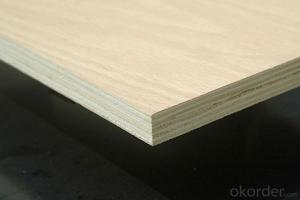Pressure treated plywood is a type of plywood that has been treated with chemicals to make it more durable and resistant to various elements such as moisture, decay, and insects. This makes it an ideal choice for outdoor projects where the materials will be exposed to the elements. Let’s dive into the world of pressure treated plywood and explore its benefits, applications, and how to work with it.
Why Choose Pressure Treated Plywood?
One of the main reasons to choose pressure treated plywood is its durability. It can withstand harsh weather conditions, making it perfect for outdoor furniture, decks, and other structures that will be exposed to rain, snow, and sun. The chemical treatment also makes it resistant to decay and insect damage, which can be a significant concern for untreated wood in outdoor environments.
Applications of Pressure Treated Plywood
Pressure treated plywood is versatile and can be used in a variety of applications. Some of the most common uses include:
– Outdoor furniture: Chairs, tables, and benches can be made from pressure treated plywood, providing a sturdy and long-lasting material for seating.
– Decks: Building a deck with pressure treated plywood ensures that it will stand up to the test of time and resist damage from moisture and insects.
– Garden structures: From garden beds to trellises, pressure treated plywood can be used to create beautiful and functional garden structures that will last for years.
– Tool sheds and storage: For outdoor storage solutions, pressure treated plywood is an excellent choice due to its resistance to moisture and decay.
How to Work with Pressure Treated Plywood
Working with pressure treated plywood is similar to working with regular plywood, but there are a few things to keep in mind. The chemical treatment can make the plywood slightly more difficult to work with, but with the right tools and techniques, you can achieve great results.
– Cutting: Use sharp tools to cut pressure treated plywood, as dull blades can cause the wood to split.
– Drilling: Pre-drill holes before screwing to avoid splitting the wood.
– Fastening: Use corrosion-resistant fasteners to ensure that your project will stand the test of time.
– Finishing: Since pressure treated plywood is already treated with chemicals, it may not require additional sealing or staining. However, if you want to change its appearance, you can paint or stain it after it has been properly sanded.
The Environmental Impact of Pressure Treated Plywood
While pressure treated plywood offers many benefits, it’s important to consider its environmental impact. The chemicals used in the treatment process can be harmful to the environment if not disposed of properly. It’s crucial to follow local regulations for disposing of any waste materials and to choose products that are certified by environmental organizations when possible.
The Future of Pressure Treated Plywood
As we move towards a more sustainable future, the demand for eco-friendly alternatives to traditional pressure treated plywood is growing. Many manufacturers are now offering alternative treatments that are less harmful to the environment, such as using natural oils or other non-toxic substances. It’s essential to stay informed about these developments and choose products that align with your values and contribute to a healthier planet.
In conclusion, pressure treated plywood is a fantastic material for a variety of outdoor projects. Its durability, resistance to decay and insects, and versatility make it an excellent choice for anyone looking to create long-lasting structures and furniture. By understanding how to work with it and being mindful of its environmental impact, you can enjoy the benefits of pressure treated plywood while also contributing to a more sustainable future.

